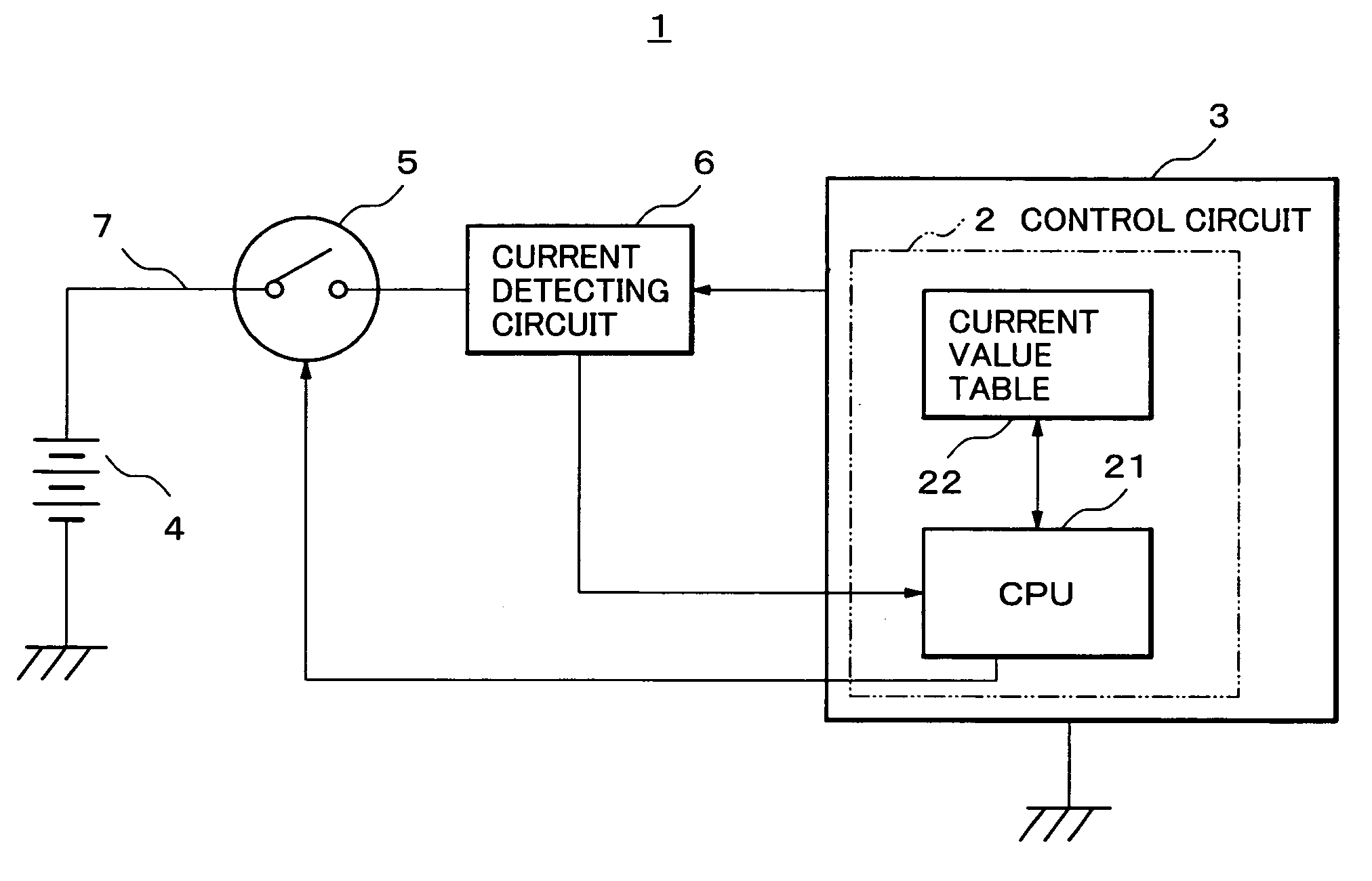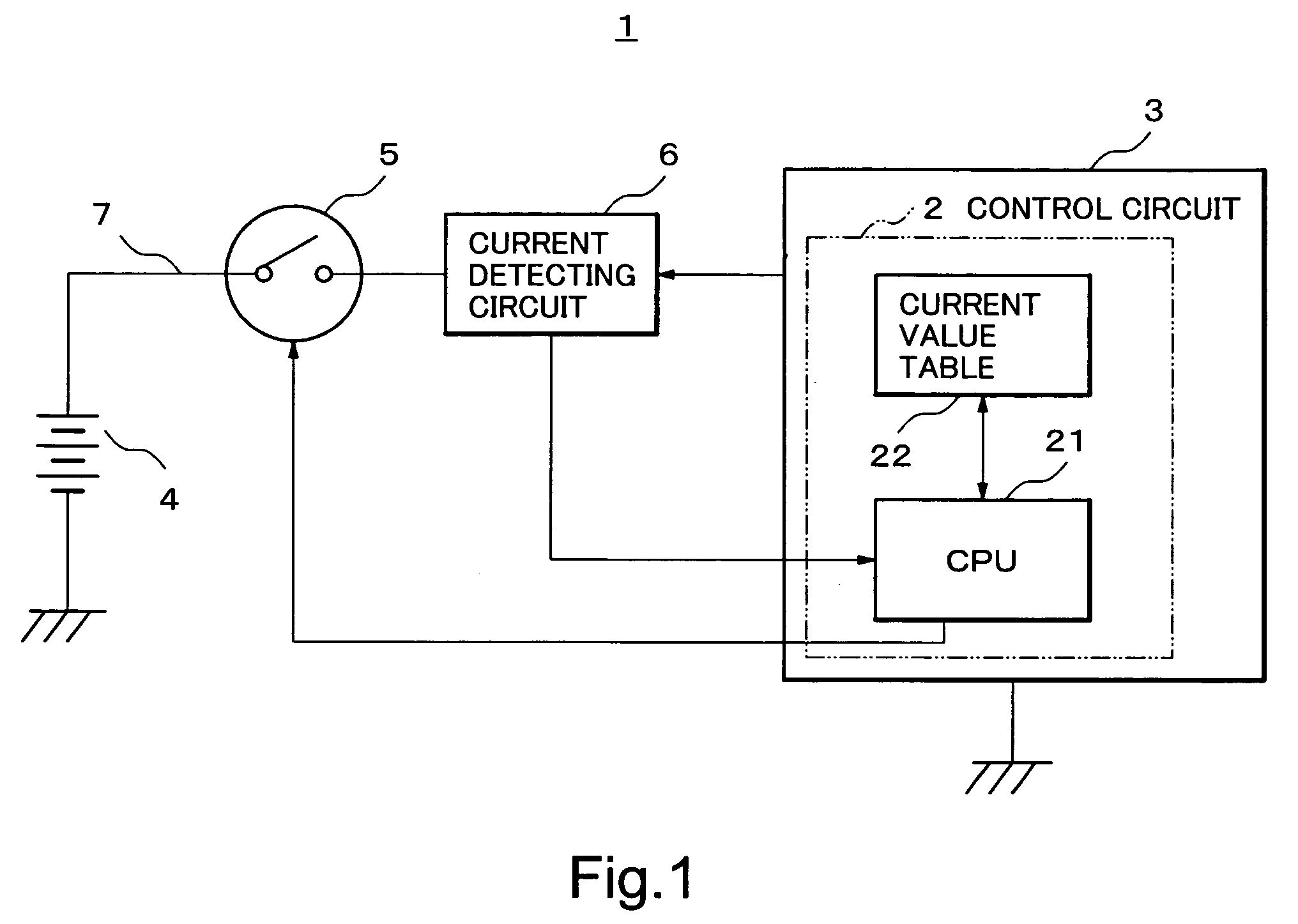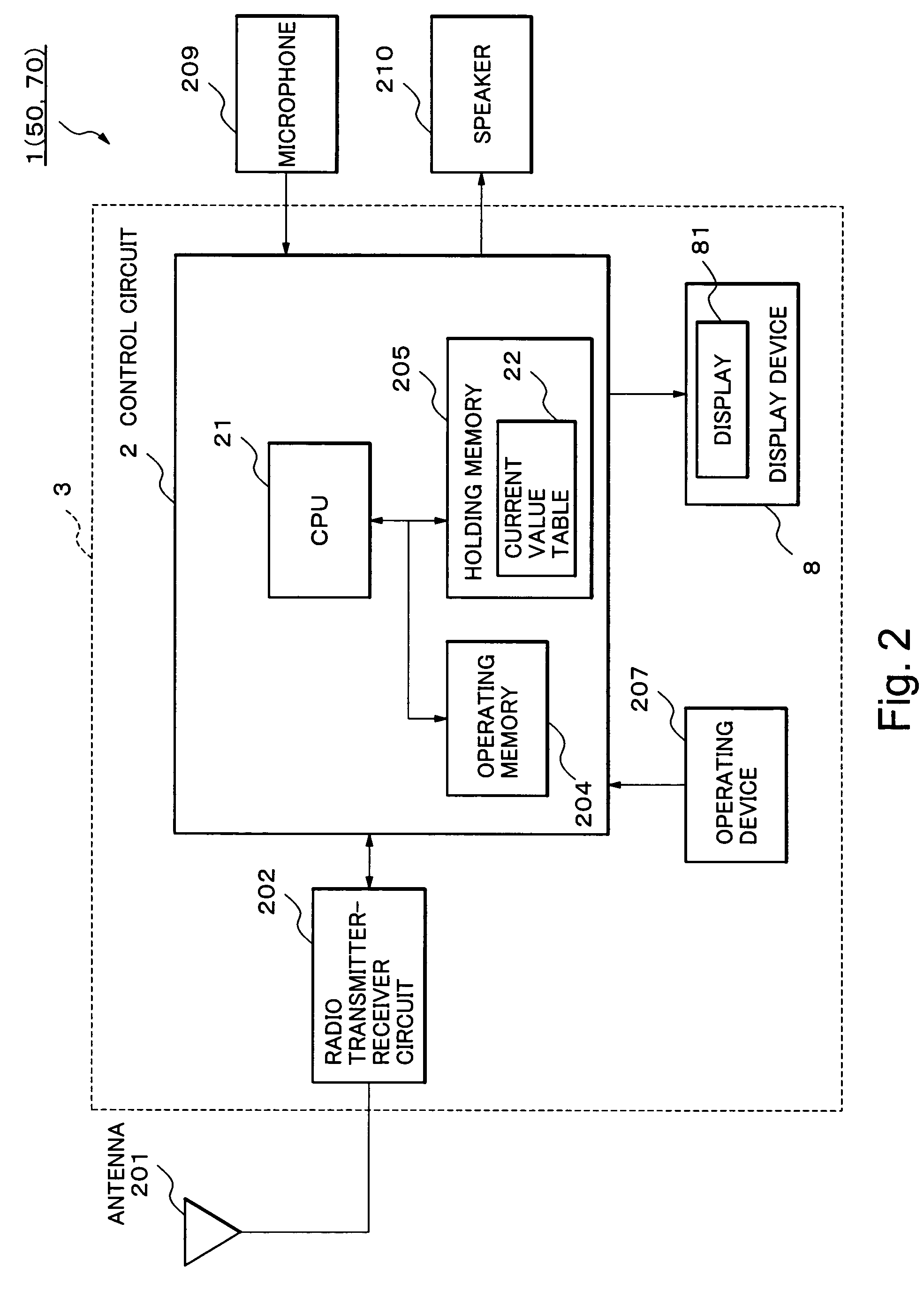Abnormal current determining method, electronic apparatus, and computer program of same
a technology of abnormal current and determining method, applied in the direction of emergency protective arrangements for limiting excess voltage/current, wireless communication, substation equipment, etc., can solve the problems of inability difficulty for conventional electronic apparatus to detect an abnormal current with high accuracy, so as to eliminate affection and high accuracy
- Summary
- Abstract
- Description
- Claims
- Application Information
AI Technical Summary
Benefits of technology
Problems solved by technology
Method used
Image
Examples
first embodiment
[0027]FIG. 1 is a block diagram making extracts of characteristic constituents of a cellular telephone 1 according to a first embodiment of the present invention.
[0028]Firstly, the cellular telephone 1 has communication functions including voice communication, and transmission and reception of electronic mails. Moreover, the cellular telephone 1 is configured to be operable in plural types of operation modes, such as standby status, voice communication status, packet communication status, and electronic mail editing status. The descriptions will be given later with reference to FIG. 2 with regard to the general configuration of the cellular telephone 1, which serves to implement the communication functions and the operations in a plurality of operation modes.
[0029]As shown in FIG. 1, the cellular telephone 1 broadly includes a main unit 3, a power source 4, a power switch 5, and a current detecting circuit 6. The main unit 3 includes a control circuit 2 having a central processing u...
second embodiment
[0086]Next, a second embodiment of the present invention will be described with reference to FIG. 5. FIG. 5 is a block diagram making extracts of characteristic constituents of a cellular telephone according to the second embodiment of the present invention.
[0087]A cellular telephone 50 (FIG. 5) according to the second embodiment is different from the cellular telephone 1 according to the first embodiment only in terms of the points to be described below. Since other aspects of the cellular telephone 50 are similar to those of the cellular telephone 1, like reference numerals designate like constituents and the description thereof will be omitted.
[0088]The cellular telephone 50 has a basic configuration which is similar to that of the cellular telephone 1. However, for the purpose of facilitating the explanation, an assumption will be made herein that the display device 8 be not incorporated in the main unit 3.
[0089]Specifically, the cellular telephone 50 according to the second emb...
third embodiment
Modified Example of Third Embodiment
[0120]The third embodiment has been described in the case where the predetermined margin includes only the margin B and margin E. However, it is also possible to design the predetermined margin to include only the margin B (i.e. the minimum allowance required). Specifically, it is possible to delete the above-described margin E in case of a small variation in voltage among the power sources or when a current variation is hardly observed despite occurrence of the variation in voltage among the power sources.
PUM
 Login to View More
Login to View More Abstract
Description
Claims
Application Information
 Login to View More
Login to View More - Generate Ideas
- Intellectual Property
- Life Sciences
- Materials
- Tech Scout
- Unparalleled Data Quality
- Higher Quality Content
- 60% Fewer Hallucinations
Browse by: Latest US Patents, China's latest patents, Technical Efficacy Thesaurus, Application Domain, Technology Topic, Popular Technical Reports.
© 2025 PatSnap. All rights reserved.Legal|Privacy policy|Modern Slavery Act Transparency Statement|Sitemap|About US| Contact US: help@patsnap.com



